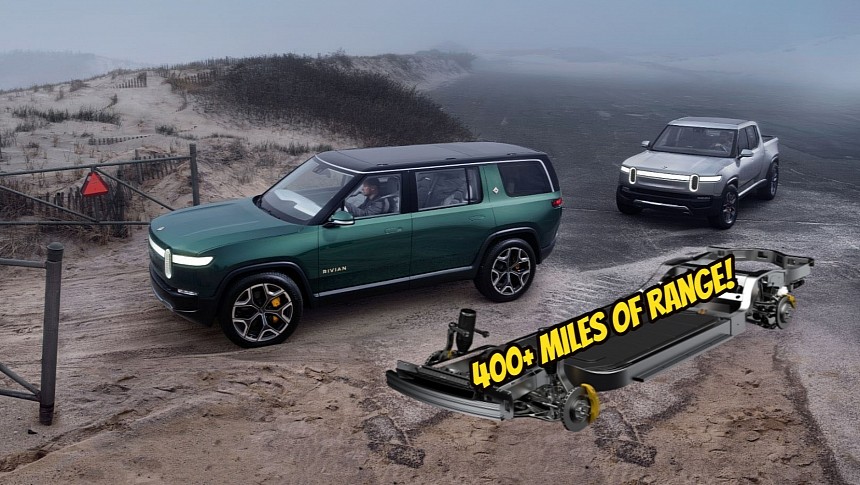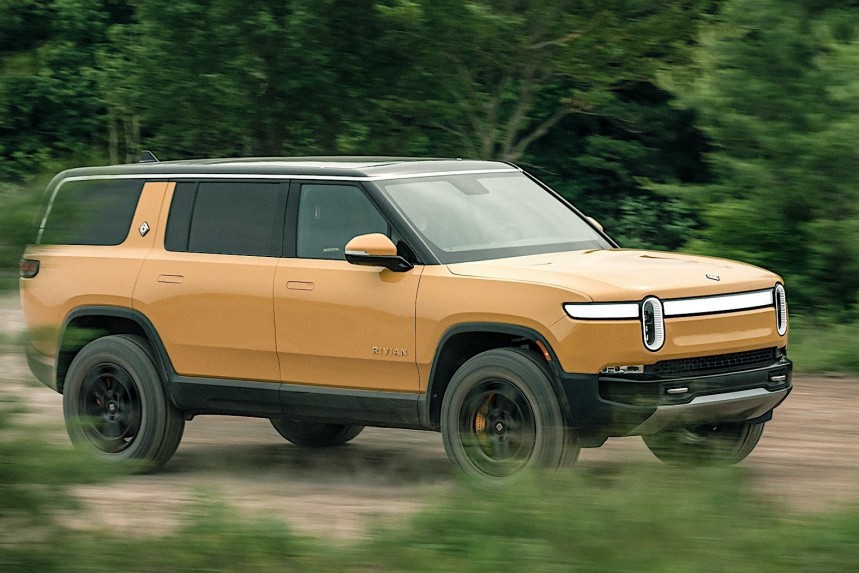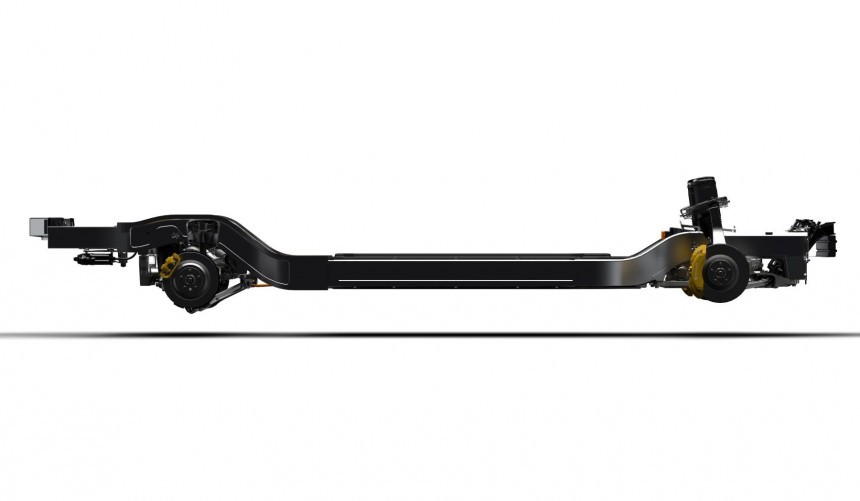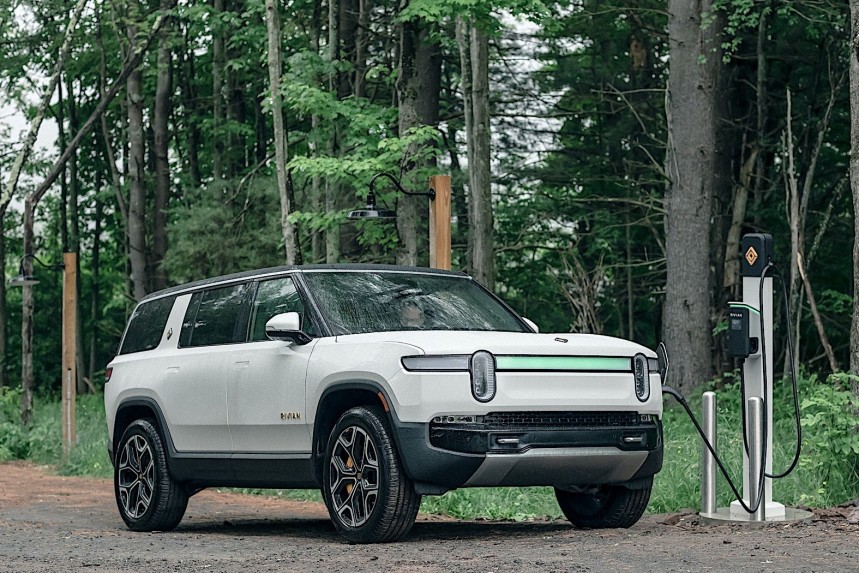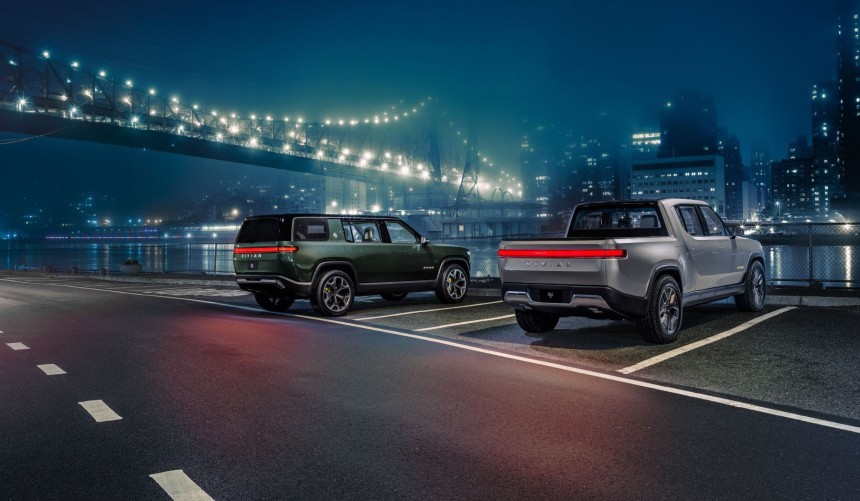Rivian is currently one of America's most prominent automakers. The R1T and R1S are highly capable vehicles and have received praise from nearly everyone. They're not perfect. But they are better than the competition in more ways than one. Now that the "Max Pack" battery is here and reaching customers, everyone wanted to know what's up with the size and the official range. Let's see what's what. The company gave us a clear answer.
Rivian is still in a rough patch with its stock price, which will most likely be dealt with as we go through 2024. The automaker's CFO, Claire McDonough, said on two separate occasions that the young marque should reach profitability by the end of 2024. We'll find out if things are on the right track in October 2024 and get the official confirmation that the brand is cashflow positive in early 2025.
But if you're like us, the stock price might not be what piques your interest the most. The zero-emission vehicles are enough to fascinate prospective EV buyers and gearheads. After all, there aren't many autos out there with a McLaren 720S-inspired suspension setup, impressive off-roading abilities, boatloads of power, cleverly designed storage areas, and a top IIHS safety rating. Those are just a few of Rivian EVs' qualities that helped them gain popularity with customers and investors.
However, the brand continues investing in making its products better. It's actively working on developing its 800V architecture, it continuously updated the R1T and R1S over time (even though that also meant the elimination of some accessories like the 12V outlets), and has constantly spent considerable amounts of time making the software better without allowing Apple or Google to enter the ecosystem.
Many respectable brands keep investing in their offerings. But Rivian is one of the few that keep doing so, no matter what analysts have to say. There's a clear path forward, and the young Irvine-based automaker plans to follow it without compromise.
Soon, the Georgia plant will enter the construction phase, and the more affordable R2-series units will follow in 2025. Rivian might just be the next Tesla. The potential certainly is there, but the road to success remains complicated.
The standard (smallest) high-voltage energy storage pack is not available yet. It will enter production in the summer of 2024 and is expected to have the lithium iron phosphate (LFP) chemistry.
It's still a lithium-ion battery, but the cathode's composition is free from pricey nickel and cobalt. That makes it more attractive for companies because they're cheaper to manufacture and more user-friendly because they can be charged to 100% without worrying too much about degradation.
The slight disadvantage is that they are not as energy-dense as those with rare cobalt in them and may be more susceptible to drastic weather changes. But the best thing about them is that the LFP chemistry is more durable in the long run and is considered safer overall.
It's also worth noting that some claims categorize the 135-kWh figure as the usable part and the buffer as measuring 6.1 kWh. That would mean the large-pack battery's total available energy storage capacity is 141.1 kWh. However, the consensus is that the large pack measures 135 kWh.
But for $10,000, customers can upgrade to the largest battery Rivian assembles in Normal, Illinois. It ups the maximum range by up to 58 miles. The R1T has the most zero-emission go when the max-pack battery is put in the skateboard chassis – 410 miles. The R1S gets 400 miles out of a single charge.
Initially, many expected the max-pack energy storage unit to measure 180 kWh. However, the automaker confirmed for autoevolution that the size is 149 kWh – 31 kWh less than initial estimations. That figure represents the total battery capacity, a.k.a the gross size that includes the buffer too. The brand is not yet ready to disclose the usable capacity.
Rivian explained that making the high-voltage max-pack battery much heavier than its large-pack counterpart (which weighs 1,754.7 lb) was unnecessary to achieve the mileage promised two years ago. Adding more cells would have certainly made the R1T and R1S weigh more.
The 2170 cell is named as such because "21" refers to the diameter and "70" to the length. Both values are expressed in millimeters, and the cathode is based on the nickel-cobalt-aluminum oxide (NCA) chemistry. As stated above, the LFP chemistry should debut with the standard pack. Rivian already uses LFP energy storage units for its all-electric EDV vans.
That must be why the max-pack-equipped R1T and R1S can only be paired with the Enduro drive units developed in-house. They require less energy than the all-electric quad-motor pickup truck and SUV.
That might have also helped the brand keep the production costs at a more acceptable level because Samsung SDI should still supply the 2170 cells. Keeping the same business partner and not exploring various other products allows the automaker to run a tight, efficient ship.
However, Rivian pointed out that the max pack's 149-kWh capacity is currently available for vehicles that are now shipping. That leaves the door open for a hypothetical 180-kWh energy storage unit that could work with the quad-motor R1T and R1S. Do note that the company has not shared plans for an upcoming 180-kWh battery with us. It's just our interpretation of the message.
Finally, we're left with one all-important clarification – customers who want a dual-motor Rivian R1T that can go 410 miles on a single charge or a Rivian R1S that can travel 400 miles on a full battery must come up with an extra $10,000 (or $7,000 for early reservation holders).
New buyers will pay $208.3 per kWh to move from the dual-motor large-pack to the dual-motor max-pack R1S and $172.4 per kWh to go from the dual-motor large-pack to the dual-motor max-pack R1T. All they must ask themselves is if the upgrade from the large-pack battery is worth it.
But if you're like us, the stock price might not be what piques your interest the most. The zero-emission vehicles are enough to fascinate prospective EV buyers and gearheads. After all, there aren't many autos out there with a McLaren 720S-inspired suspension setup, impressive off-roading abilities, boatloads of power, cleverly designed storage areas, and a top IIHS safety rating. Those are just a few of Rivian EVs' qualities that helped them gain popularity with customers and investors.
However, the brand continues investing in making its products better. It's actively working on developing its 800V architecture, it continuously updated the R1T and R1S over time (even though that also meant the elimination of some accessories like the 12V outlets), and has constantly spent considerable amounts of time making the software better without allowing Apple or Google to enter the ecosystem.
Many respectable brands keep investing in their offerings. But Rivian is one of the few that keep doing so, no matter what analysts have to say. There's a clear path forward, and the young Irvine-based automaker plans to follow it without compromise.
Something for anyone
Currently, customers can order and take delivery in a couple of weeks or months the following all-electric Rivian-made vehicles:- R1T with the dual-motor and large-pack battery – starting at $79,000; [eligible for half of the EV tax credit]
- R1T with the performance dual-motor and large-pack battery – starting at $84,000;
- R1T with the quad-motor and large-pack battery – starting at $87,000;
- R1T with the dual-motor and max-pack battery – starting at $89,000;
- R1T with the performance dual-motor and max-pack battery – starting at $94,000;
- R1S with the dual-motor and large-pack battery – starting at $84,000;
- R1S with the performance dual-motor and large-pack battery – starting at $89,000;
- R1S with the quad-motor and large-pack battery – starting at $92,000;
- R1S with the dual-motor and max-pack battery – starting at $94,000;
- R1S with the performance dual-motor and max-pack battery – starting at $99,000.
The standard (smallest) high-voltage energy storage pack is not available yet. It will enter production in the summer of 2024 and is expected to have the lithium iron phosphate (LFP) chemistry.
The slight disadvantage is that they are not as energy-dense as those with rare cobalt in them and may be more susceptible to drastic weather changes. But the best thing about them is that the LFP chemistry is more durable in the long run and is considered safer overall.
Being adventurous without experiencing range anxiety
When writing, the maximum range anyone can get from their R1T or R1S is possible only when the vehicles ride on 21-inch wheels. Both can go 352 miles on a single charge when equipped with the 135-kWh (133-kWh usable) large-pack energy storage unit.It's also worth noting that some claims categorize the 135-kWh figure as the usable part and the buffer as measuring 6.1 kWh. That would mean the large-pack battery's total available energy storage capacity is 141.1 kWh. However, the consensus is that the large pack measures 135 kWh.
Initially, many expected the max-pack energy storage unit to measure 180 kWh. However, the automaker confirmed for autoevolution that the size is 149 kWh – 31 kWh less than initial estimations. That figure represents the total battery capacity, a.k.a the gross size that includes the buffer too. The brand is not yet ready to disclose the usable capacity.
Rivian explained that making the high-voltage max-pack battery much heavier than its large-pack counterpart (which weighs 1,754.7 lb) was unnecessary to achieve the mileage promised two years ago. Adding more cells would have certainly made the R1T and R1S weigh more.
One smart approach
Its engineers developed a new battery management system that "optimizes and increases the usable battery energy from a new version of our 2170 battery cell with advanced chemistry that allows for both higher energy density and higher absolute energy." In non-corporate lingo, that means Rivian found a way to deliver the promised 400+-mile range without adding more cells and increasing production costs.The 2170 cell is named as such because "21" refers to the diameter and "70" to the length. Both values are expressed in millimeters, and the cathode is based on the nickel-cobalt-aluminum oxide (NCA) chemistry. As stated above, the LFP chemistry should debut with the standard pack. Rivian already uses LFP energy storage units for its all-electric EDV vans.
That might have also helped the brand keep the production costs at a more acceptable level because Samsung SDI should still supply the 2170 cells. Keeping the same business partner and not exploring various other products allows the automaker to run a tight, efficient ship.
However, Rivian pointed out that the max pack's 149-kWh capacity is currently available for vehicles that are now shipping. That leaves the door open for a hypothetical 180-kWh energy storage unit that could work with the quad-motor R1T and R1S. Do note that the company has not shared plans for an upcoming 180-kWh battery with us. It's just our interpretation of the message.
Finally, we're left with one all-important clarification – customers who want a dual-motor Rivian R1T that can go 410 miles on a single charge or a Rivian R1S that can travel 400 miles on a full battery must come up with an extra $10,000 (or $7,000 for early reservation holders).
New buyers will pay $208.3 per kWh to move from the dual-motor large-pack to the dual-motor max-pack R1S and $172.4 per kWh to go from the dual-motor large-pack to the dual-motor max-pack R1T. All they must ask themselves is if the upgrade from the large-pack battery is worth it.
